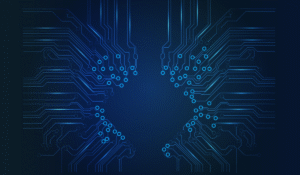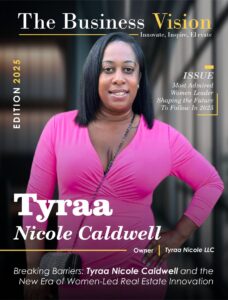As we step into an era of accelerated digital transformation, the role of the Chief Information Officer (CIO) is more strategic and cross-functional than ever. The modern CIO is no longer just a tech leader—they are a driver of business innovation, operational resilience, and customer experience. In 2025, navigating the evolving technology landscape requires more than just expertise; it demands a curated arsenal of forward-thinking tools and strategies.
This article provides a comprehensive guide to the CIO Toolkit 2025, highlighting essential technologies, frameworks, and platforms that every CIO should be equipped with to lead their organizations into the future.
1. AI-First Infrastructure
Artificial Intelligence is no longer a supplement—it’s becoming the foundation of IT strategy. An AI-first infrastructure is now a core element of the CIO Toolkit 2025. From predictive analytics to autonomous operations, CIOs must ensure that their enterprise stack is ready to support scalable, ethical, and efficient AI deployment.
Must-Have Elements:
- GPU-optimized cloud infrastructure
- AI/ML model management tools
- Responsible AI governance platforms
Why It Matters:
AI-driven insights can reduce decision-making time, automate manual tasks, and uncover growth opportunities hidden in enterprise data.
2. Cybersecurity Mesh Architecture (CSMA)
As hybrid work and digital ecosystems expand, cybersecurity remains a top priority. The CIO Toolkit 2025 must include Cybersecurity Mesh Architecture, a flexible, composable approach to extend security controls wherever assets, identities, and data reside.
Tools to Implement:
- Identity threat detection & response (ITDR)
- Zero Trust network access (ZTNA)
- Context-aware access management solutions
Strategic Insight:
CSMA allows CIOs to unify disparate security policies under a single framework—critical in multi-cloud and remote environments.
3. Unified Data Fabric Platforms
Data is the fuel of digital business. Yet, many organizations are still battling data silos and integration complexity. In 2025, a data fabric approach is essential to ensure seamless access, governance, and analytics across environments.
Features to Include:
- Real-time data integration
- Metadata-driven AI automation
- Self-service data provisioning
CIO Advantage:
With unified data platforms, CIOs can enable data democratization while maintaining strict governance and compliance.
4. Multi-Cloud and Hybrid Cloud Orchestration
Enterprises in 2025 are increasingly cloud-native, but reliance on a single provider is no longer viable. CIOs need a toolkit that includes robust multi-cloud orchestration capabilities.
Critical Tools:
- Cloud management platforms (CMPs)
- Infrastructure as Code (IaC) automation
- Cost visibility and optimization tools
What It Enables:
Multi-cloud strategies empower CIOs with flexibility, resilience, and cost efficiency while minimizing vendor lock-in.
5. Low-Code and No-Code Development Platforms
To keep up with growing demands for innovation and rapid deployment, low-code/no-code platforms are a staple in the CIO Toolkit 2025. These platforms empower both developers and business users to build applications faster without compromising on security or integration.
Key Platforms to Explore:
- Microsoft Power Apps
- OutSystems
- Mendix
CIO Benefits:
Accelerates time-to-market, reduces backlog for IT teams, and fosters cross-departmental collaboration on digital initiatives.
6. Intelligent Automation and RPA 2.0
Robotic Process Automation (RPA) has matured into intelligent automation—combining AI, machine vision, and natural language processing with rule-based bots. CIOs must now leverage automation beyond finance and HR into areas like customer service, compliance, and operations.
Must-Have Tools:
- Intelligent Document Processing (IDP)
- Conversational AI and virtual agents
- Process mining and discovery tools
Strategic Outcome:
Automating complex workflows reduces operational friction and frees up human capital for higher-value work.
7. Digital Experience Platforms (DXPs)
Customer and employee experiences are now digital-first. DXPs are integrated technologies that help organizations deliver seamless, personalized, and consistent experiences across touchpoints.
Core Components:
- Omnichannel content management
- Customer data platforms (CDPs)
- AI-driven personalization engines
CIO Takeaway:
A strong digital experience layer helps drive brand loyalty, customer retention, and employee engagement.
8. IT Financial Management (ITFM) Tools
In 2025, CIOs are expected to justify technology spend with business outcomes. IT Financial Management (ITFM) tools provide financial visibility and forecasting for IT investments, enabling CIOs to make data-informed decisions.
Must-Have Functions:
- Technology Business Management (TBM) frameworks
- Cloud cost allocation and chargeback models
- ROI calculators and TCO modeling
Impact:
Stronger budgeting, alignment with business value, and optimized IT spending.
9. Quantum-Ready Platforms and Simulators
Quantum computing may still be in its early days, but CIOs should begin preparing their organizations for quantum-readiness—especially in industries like finance, logistics, and pharmaceuticals.
Emerging Tools:
- IBM Qiskit
- Amazon Braket
- Microsoft Azure Quantum
CIO Edge:
Investing in quantum simulators and cryptographic readiness tools positions businesses to capitalize on this game-changing innovation.
10. Collaboration and Productivity Ecosystems
Remote and hybrid work are here to stay. The modern CIO needs to support seamless communication, digital workflows, and secure collaboration tools to keep teams productive across geographies.
Essential Tools:
- Unified communications as a service (UCaaS)
- AI-enhanced meeting platforms
- Digital whiteboards and workflow automation tools
Strategic Relevance:
Boosts organizational agility, fosters innovation, and supports employee satisfaction.
Bonus: CIO Soft-Skills Toolkit
While technologies are critical, so are leadership skills. The CIO Toolkit 2025 must also include personal development tools that enhance stakeholder engagement, change management, and strategic thinking.
Recommendations:
- Executive coaching platforms
- Peer communities and CIO networks
- AI-powered performance analytics tools
Bottom Line:
CIOs who balance technical excellence with leadership influence will be best equipped to lead transformation.
Key Takeaways for CIOs in 2025
✅ Adopt a Platform Mindset: Build composable and scalable IT environments instead of siloed systems.
✅ Automate Intelligently: Focus on end-to-end automation that delivers real business outcomes.
✅ Invest in Experience: Whether customer-facing or internal, experience is a competitive differentiator.
✅ Use Data as a Strategic Asset: Make real-time, governed data the foundation of every business decision.
✅ Lead with Purpose and Vision: Inspire innovation while aligning with organizational goals and ethical standards.
Conclusion: Building the Future-Ready CIO Toolkit
The CIO Toolkit 2025 reflects a shift in the CIO’s role—from tech enabler to digital visionary. The right mix of technology, governance, and leadership will determine not just IT success, but overall enterprise performance. As businesses face continuous disruption, it’s not just about keeping up—it’s about staying ahead.
By integrating the must-have tools and technologies highlighted above, CIOs can drive transformation, foster innovation, and shape a resilient digital future for their organizations.







